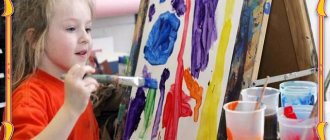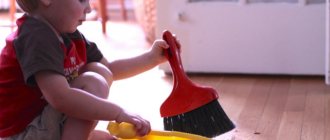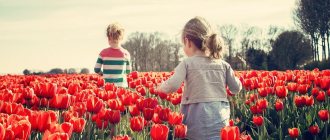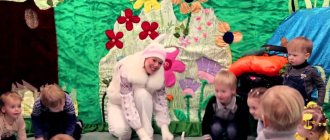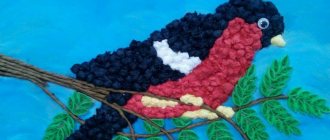A game
An important means of aesthetic education is play. Play activity creates a special emotional field in which the child, naturally, without coercion or edification, of his own free will strives for self-expression, self-knowledge, and independence. Today, games that contribute to the development of the aesthetic orientation of a child’s personality and the identification of the actual level of learning are very popular. The range of games used for the purpose of aesthetic education is large (Fig. 2).
Fig.2
Principles of aesthetic education
Creative abilities must be developed from birth. From early childhood, one must instill good taste and develop the need to communicate with the sublime. Aesthetic education is aimed at developing the ability to see beauty and following the rules of good behavior, experience of friendly relations with others. Its basis is the following principles:
- Interaction. Any action should strive for aesthetic perfection: communication with peers, nature, objects of art, independent household and work activities.
- A complex approach. Education gives tangible results if creative activity is based on interdisciplinary connections and connects various types of art.
- Socialization. Aesthetic and artistic activity is not divorced from life. This is how students develop an adequate attitude towards their environment; they will be able to find beauty in its various manifestations.
- Systematicity. General and aesthetic development are interconnected. With this approach, the emotional sphere and all cognitive processes develop harmoniously.
- Independent creativity. The method of aesthetic education is most effective when applied to preschool children if they master some creative activities themselves: dancing, drawing, sculpting or singing in a choir.
- Aesthetics should dominate all life. Little children need to live in beauty. The main educational meaning is to understand the importance of accuracy and politeness. Proper aesthetic development is influenced by the beauty of the room and clothing.
- The age of the student is taken into account. Educational means are selected according to age. The formation of personality in more mature years depends on how correctly aesthetic perception was formed in younger schoolchildren.
Art
An important means of aesthetic education is, of course, art. Works of art make a person see life through images. Aesthetic pleasure when contemplating works of art arises as a result of the experience of participation in the creativity of artists. Art allows us to bring artistic expression into everyday life.
Art fills schoolchildren’s free time, fills it with socially valuable content, satisfies the interests and needs of the individual, and makes development diversified. Art can relieve tension and stress from study, work, and sports. Art captivates and transports a person into the world of new emotional states that switch mental activity and create relaxation.
Raising a child through activity is a natural feature of upbringing. Artistic activities include various theatrical games or performances, verbal and artistic creativity, music playing, visual and arts and crafts, and design work. All of the listed means of aesthetic education are effective both on their own and in conjunction.
Literature is the art of literary expression. Literature helps to reproduce images of works of art in your imagination, characterize heroes and analyze their actions. As a result of mastering the culture of reading, students begin to think about what the book teaches and experience deep and vivid impressions.
Music as a means of aesthetic education teaches us to perceive musical works and ensures the acquisition of simple performance skills. Music gives rise to lyrical feelings in a person, develops an ear for music, harmony, artistic taste, and has an impact on various areas of the personality.
Visual arts introduces works of art; elements of art history that contribute to the formation of skills in practical depiction, visual literacy and creative self-expression.
Introduction to art. Guidelines
Understanding art is not an innate quality, it is nurtured. In order for a child to learn to perceive classical music, he must listen to it from early childhood. It needs to be carefully selected and turned on infrequently. Upon reaching 3-4 years old, you can try to discuss what you heard, tell your child about music and musical instruments.
Kids begin to get acquainted with painting by looking at illustrations for fairy tales. A little later, works of art are selected taking into account age. It is better if these are close and understandable plots, heroes or animals.
You can start getting acquainted with the theater at the age of 1.5 years. The puppet theater performs for no longer than half an hour; the youngest do not have time to get tired.
Children attend museums, the Philharmonic, and ballet from the age of 4-5. It is better to choose children's themed museums, performances, and concerts.
When parents are going to a theater or museum with their child, they need to explain to him how to behave in this important place. Before the event, you should feed the baby so that later the feeling of hunger does not interfere with the perception of beauty. It is advisable that the path to the abode of the muses is not too tiring. Clothes should be thoughtful and beautiful; this will emphasize the importance of the event and be memorable.
After a cultural event, you should definitely discuss with your child what you saw and heard. Let him talk about his impressions, answer whether he still wants to visit an exhibition or theater in the future. If the child does not show delight, there is no need to rush into organizing the next cultural outing. Take a break, organize an event after a while.
Aesthetics of everyday life
It is important to awaken in students the desire to affirm beauty wherever they spend their time, do business or relax, to involve them in creating an aesthetic environment around them. Only after this is it possible to use various means of aesthetic education. The environment in which a child lives and develops plays an important role in the development of aesthetic feelings. If the environment is aesthetic, beautiful, if there are beautiful relationships between people, the speech that the child hears is correct and pure, then he will accept the aesthetic environment as the norm and strive for it. Therefore, it is important to pay attention to the aesthetics of everyday life. The aesthetics of everyday life also includes a person’s appearance. The aesthetics of everyday life is the background that reinforces or destroys emerging ideas about beauty.
